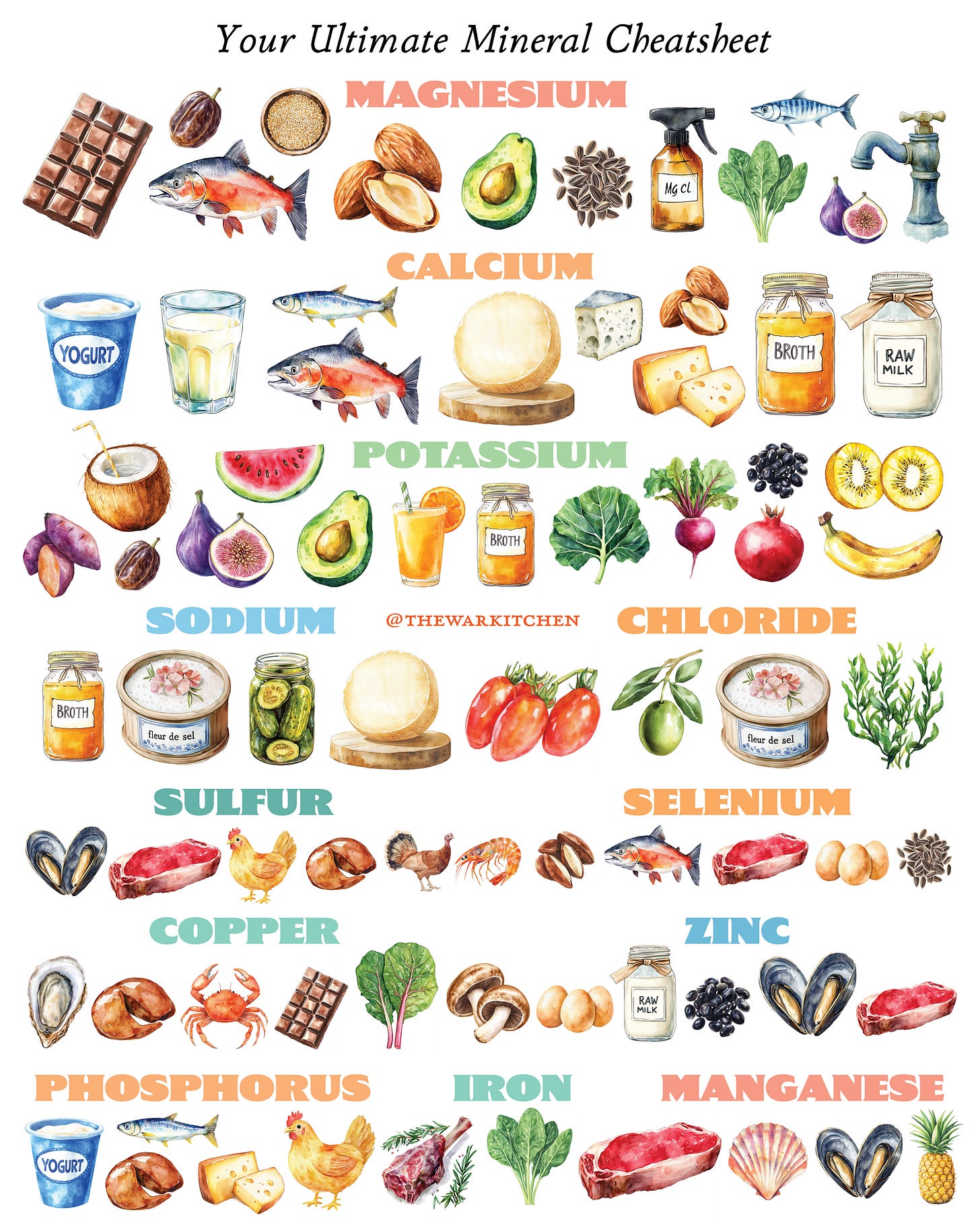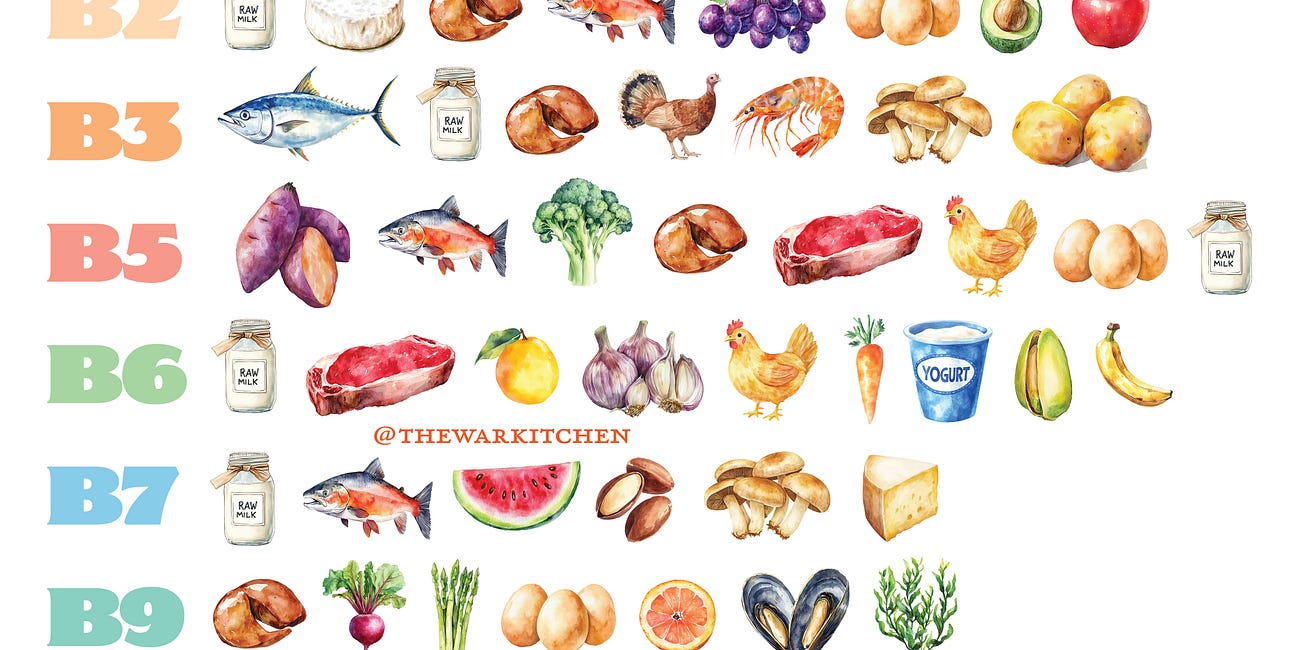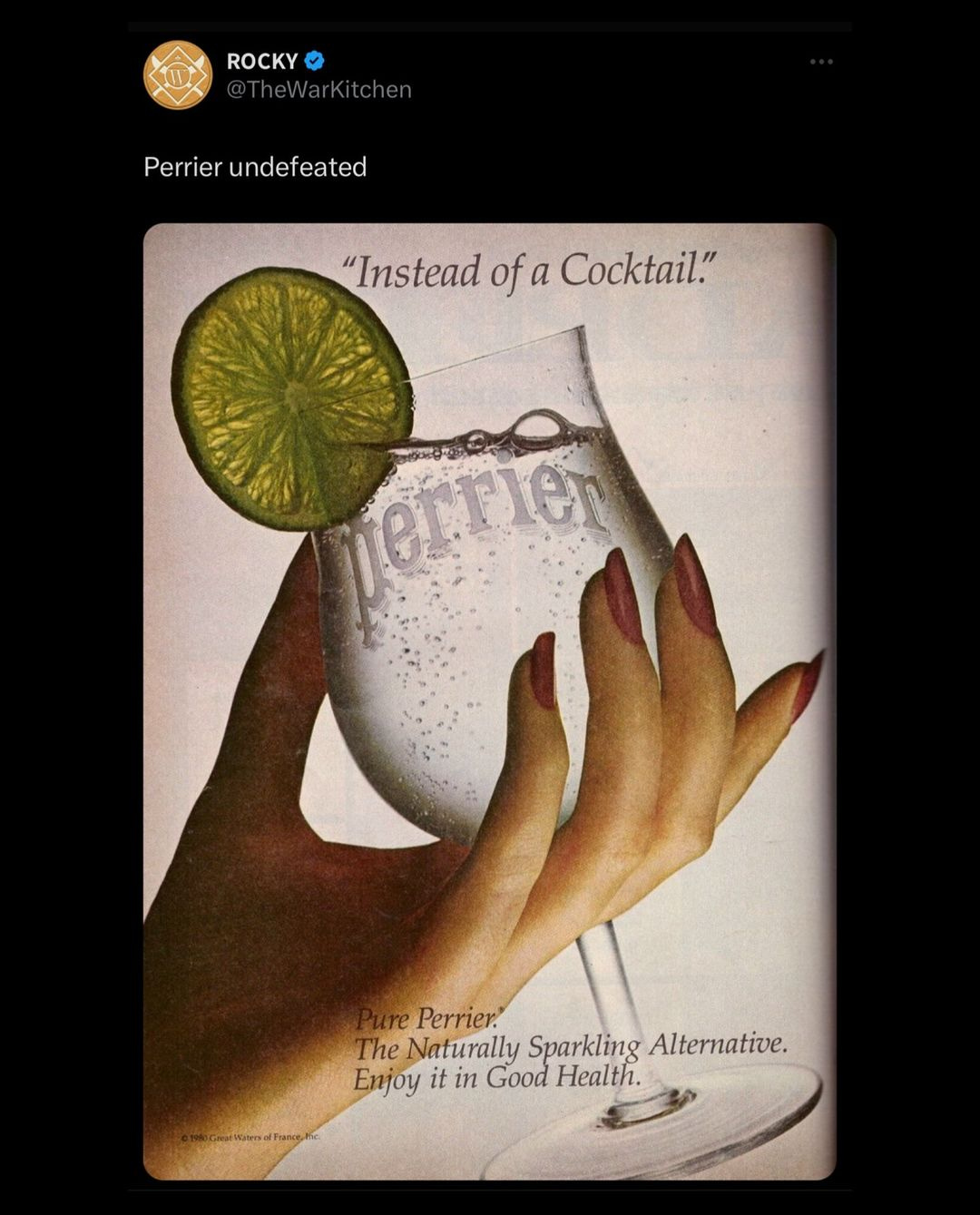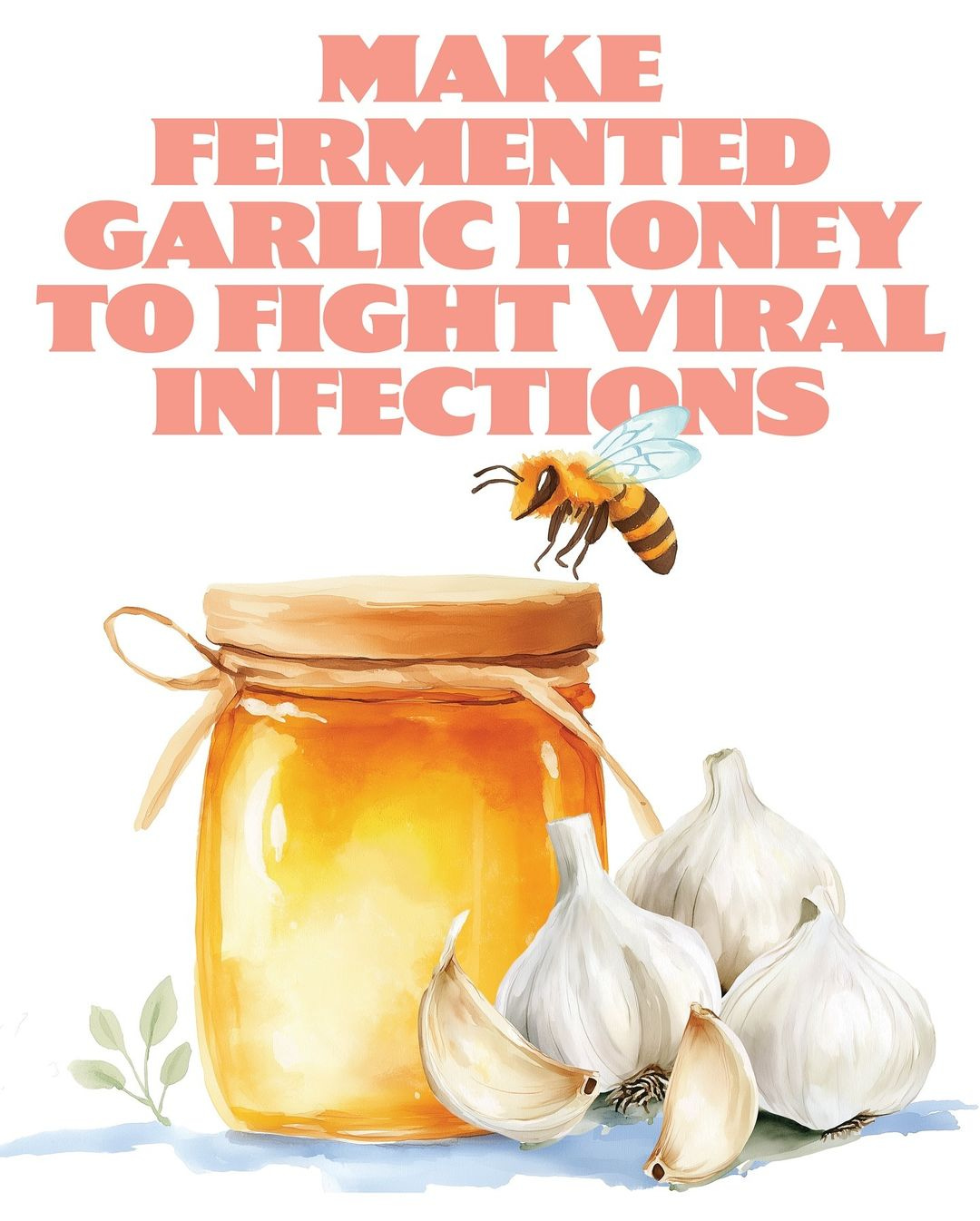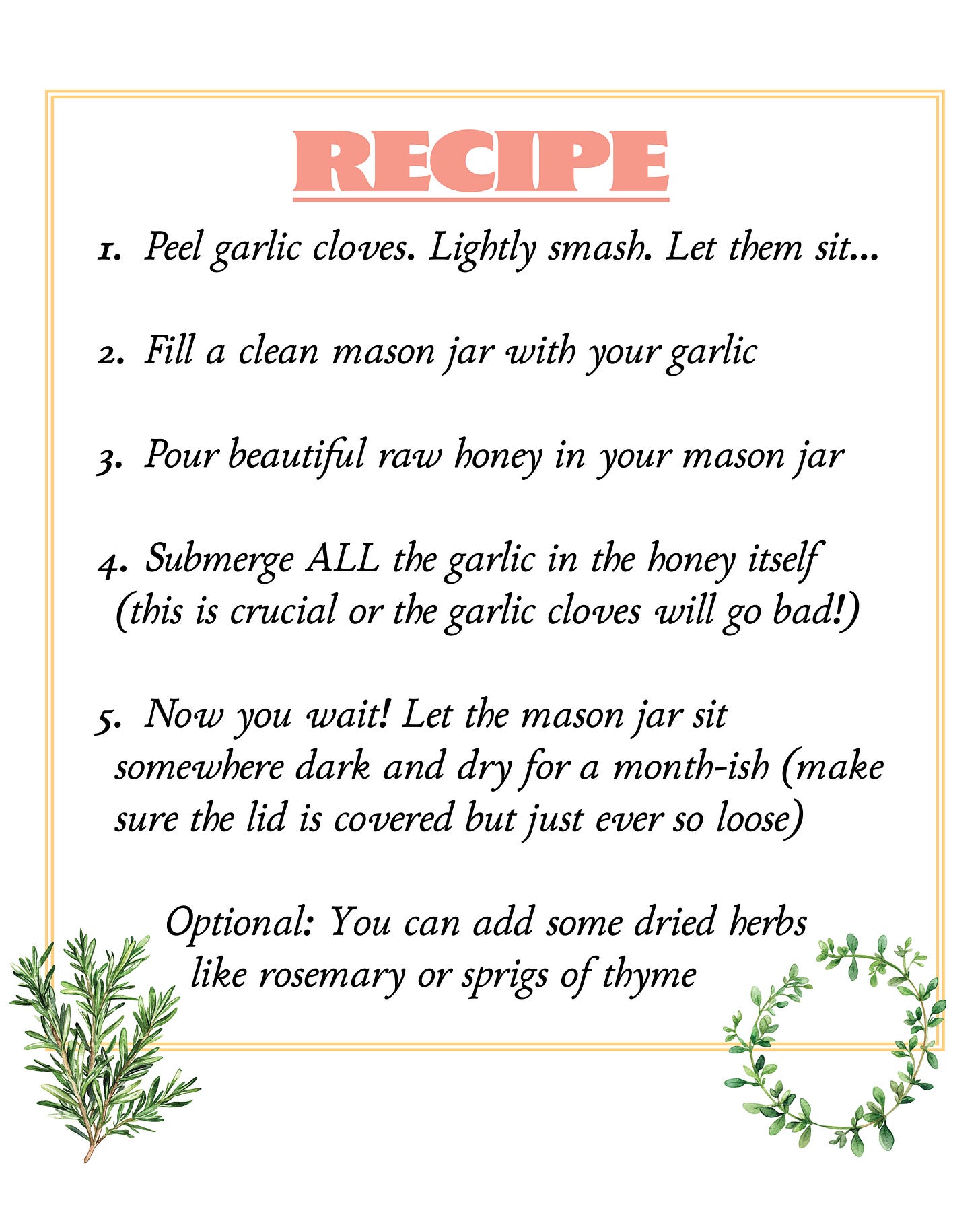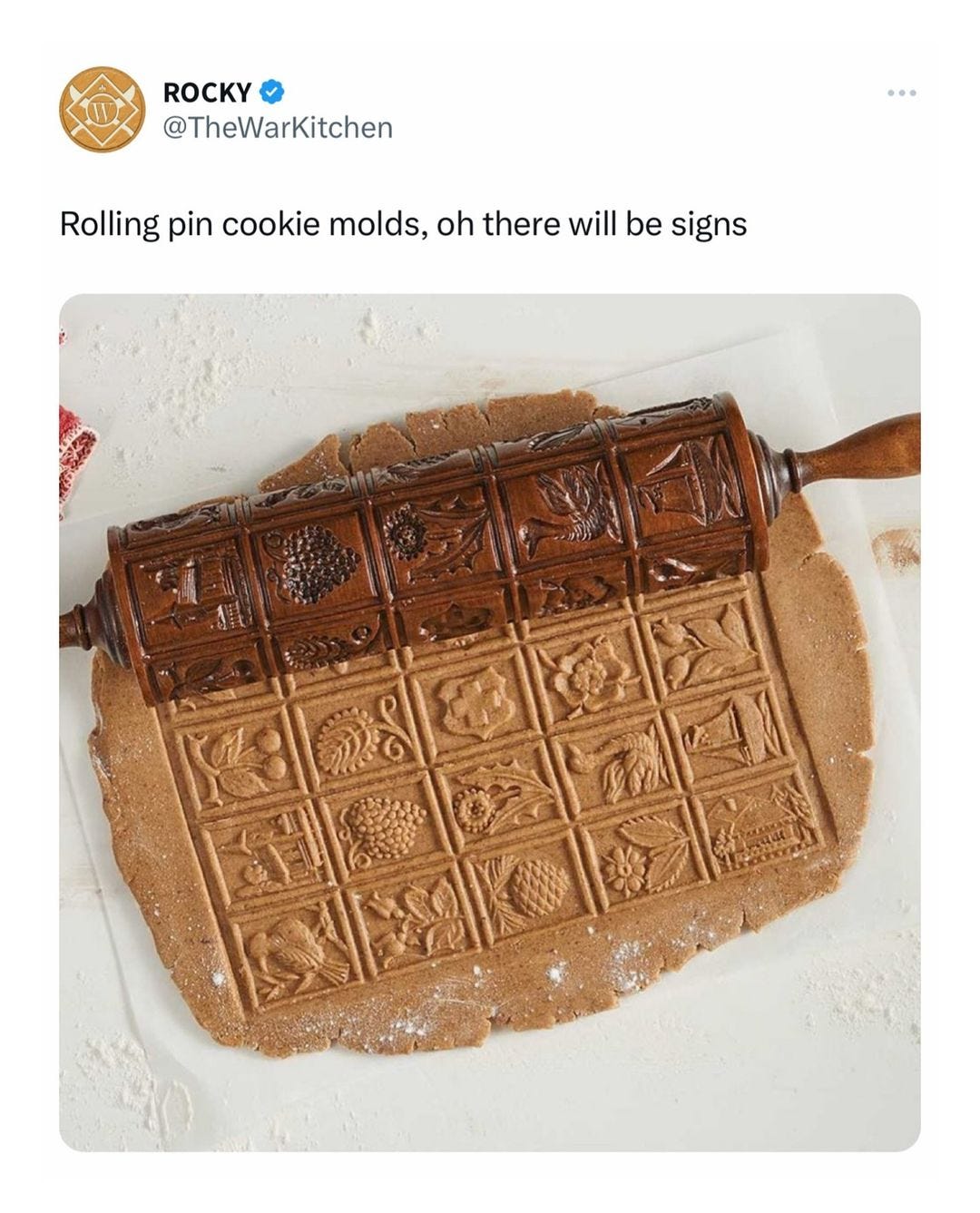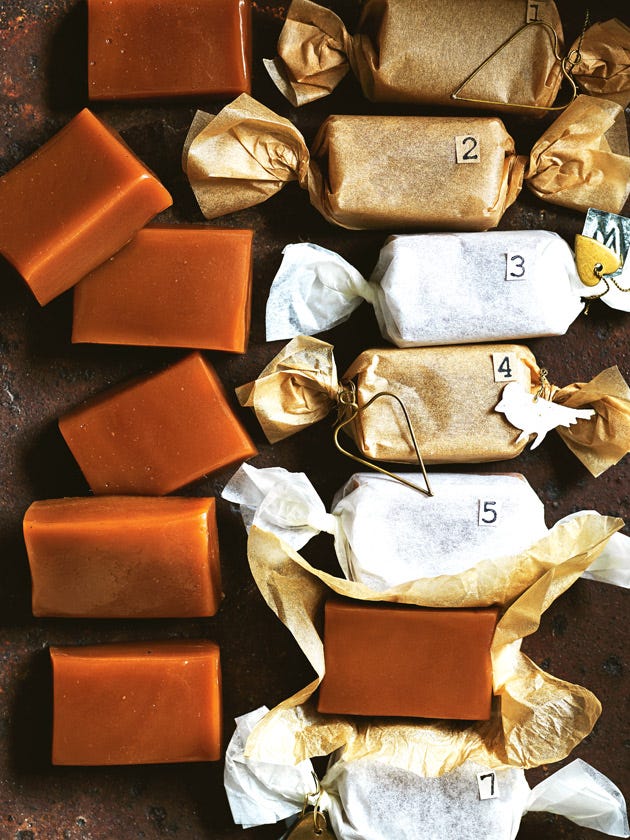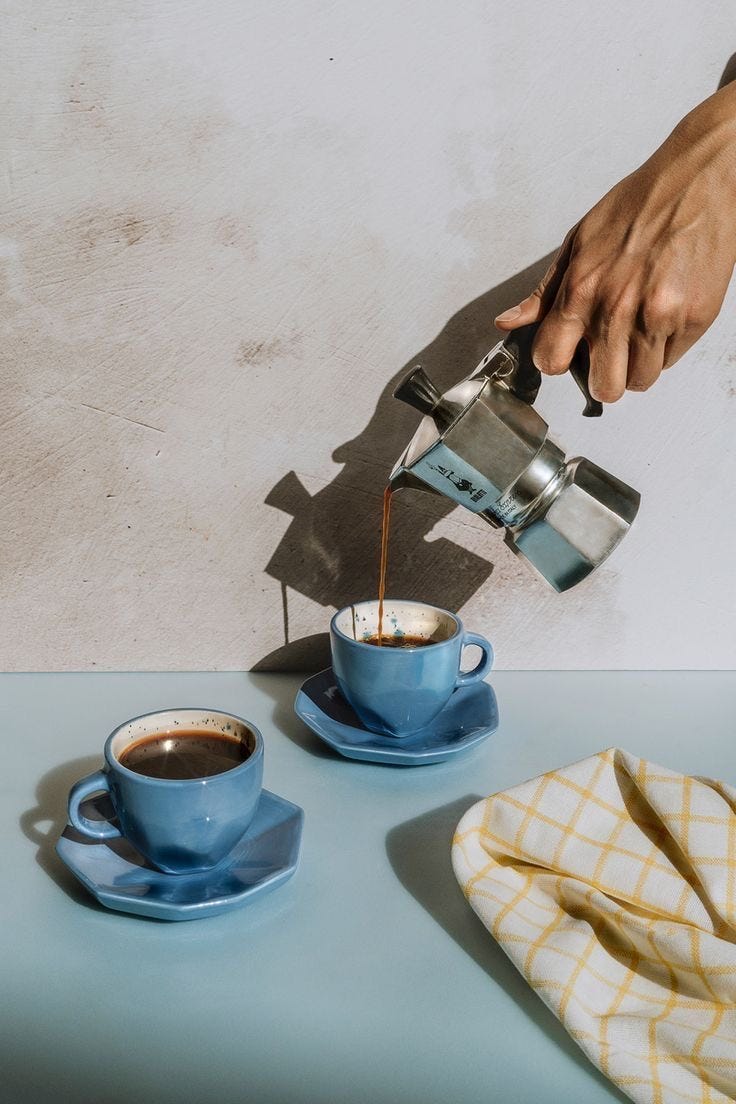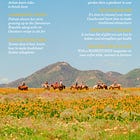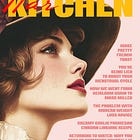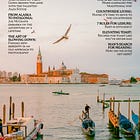#095 Your mineral cheatsheet
The Sequel
Before we get into it all, thank you the AMAZING response we received for our latest print issue! It’s been beautiful seeing so many of you with our mags on your coffee tables, and I want you to know that this is only the beginning! Love you all. We plan on releasing another this year for winter :)
If you haven’t gotten your copy, you can get yours here while stocks last:
Note: If you are based in the EU or anywhere OUTSIDE the US, Canada and UK, we expect to run out of orders within the next day or so. We will not be doing a re-print until winter, so please make sure you get yours if you have been intending to get a copy. Appreciate the love!
For any queries with your order, reach: support@warkitchen.net
Just like vitamins, minerals are crucial. A chronic deficiency or imbalance is extremely harmful and something you want to avoid. This cheatsheet is designed to be an easy resource to identify some foods rich in these minerals.
Minerals are broadly split into two categories — macrominerals (your electrolytes) and microminerals (your trace minerals).
Let’s list down the best sources for each one:
Magnesium - Dark chocolate, wild salmon, medjool dates, almonds, quinoa, avocado, sunflower seeds, magnesium chloride solution, spinach, mackerel, figs, quality spring water
Calcium - Yogurt, kefir, raw or lightly pasteurized milk, sardines, wild-caught salmon, cheese (that circle in the middle is an entire wheel of parmigiano reggiano), almonds, quality bone broth
Potassium - Coconut water, sweet potatoes, dates, figs, watermelon, avocados, orange juice, quality bone broth, collard greens, beetroot, pomegranate, beans, kiwi, banana
Sodium - real sea salt (fleur de sel), quality bone broth, pickles, cheese
Chloride - Tomatoes, olives, real sea salt, seaweed
Sulfur - Mussels, beef, chicken, liver, turkey, shellfish, brazil nuts
Selenium - Brazil nuts, shellfish, wild-caught salmon, beef, eggs, sunflower seeds
Copper - Oysters, liver, crab, dark chocolate, swiss cahrd, shiitake mushrooms, eggs
Zinc - Eggs, raw or lightly pasteurized milk, beans, mussels, beef
Phosphorus - Yogurt, dairy, liver, sardines, cheese, chicken
Iron - Beef, spinach (avoid iron-fortified grain, its just not as bioavailable for us)
Manganese - Beef, scallops, mussels, pineapple, dark chocolate
When it comes to your main minerals (your electrolytes), one of the key levers is hydration. What are you drinking on a day to day basis? Are the minerals you’re consuming sufficient? Or are you simply diluting your body’s current stores by flushing your system with 100% distilled water?
Prioritize hydrating yourself with spring water or distilled water that’s been remineralized. You want the water you drink to completely quench your thirst. Incorporate coconut water into your lifestyle for the potassium. Eat real salt. Ensure you’re getting enough magnesium. The reason why I added that Magnesium Chloride bottle in the infographic is because it’s one of the best ways you can get magnesium in while at the same time curing any niggling issues you’re having with your body. Topical magnesium chloride is a godsend! If you feel itchy from it, dilute it even further and start small. Cleaning up your diet will also help.
Most people think of sodium (and magnesium), when it comes to hydration and potassium is one mineral that is often overlooked. Potassium and sodium actually work hand in hand to regulate the fluids in your body. Potassium is inside of your cells & sodium is outside. When sodium enters a cell, potassium leaves. This creates an electrical signal that powers nerve impulses for your heart beat, muscle contraction, reflexes, etc. Ideally, you’d want your potassium:sodium ratio to AT LEAST be a 1:1 Unfortunately, most people aren’t consuming enough potassium to meet their sodium intake.
With the other minerals, you usually get enough of them if your diet is on point but one thing to take note is whether you’re accidentally causing an imbalance. For example, with organ meats being more popular these days, some people put themselves at risk by having too much copper to zinc when they overeat beef liver. Everything needs to be in balance.
Also, as we mentioned last week:
If you want to take this a step further, I highly recommend downloading a food tracking application like MyFitnessPal or Cronometer and logging the foods you’re consuming for a week or two. It’ll show you exactly how close you are to hitting your RDAs (not just for vitamins but minerals as well), and then from there you can tweak your diet or perhaps start incorporating some targeted supplementation to fill in the gaps.
This is a much better approach than randomly consuming a generic multivitamin that’s not even curated to your specific lifestyle needs.
Also, understand that your body will not cease to function if you simply miss or go under the target of a certain vitamin’s RDA for the day. In fact, it’s much better for you to look at things from a weekly standpoint instead of a daily one. Just make sure you’re not severely shortchanging yourself.
Engage in real hydration
This is your reminder to once again engage in (real hydration)
Make fermented garlic honey
Garlic has been known as the “poor man’s penicillin”, and if you ask me? That MASSIVELY undersells it. WE severely underestimate just what we can harness from the herbs and plants that live and breathe among us. If we don’t pass these ancient remedies down, they’ll be lost, forever.
The signs will be unavoidable
Rolling pin cookie molds. Vintage fine china. Le creuset collection by the Pantone. Oh, there will be signs.
❋ JOHN WHELAN ADORNS PARIS’ NOLINSKI RESTAURANT WITH ART-DECO DETAILS
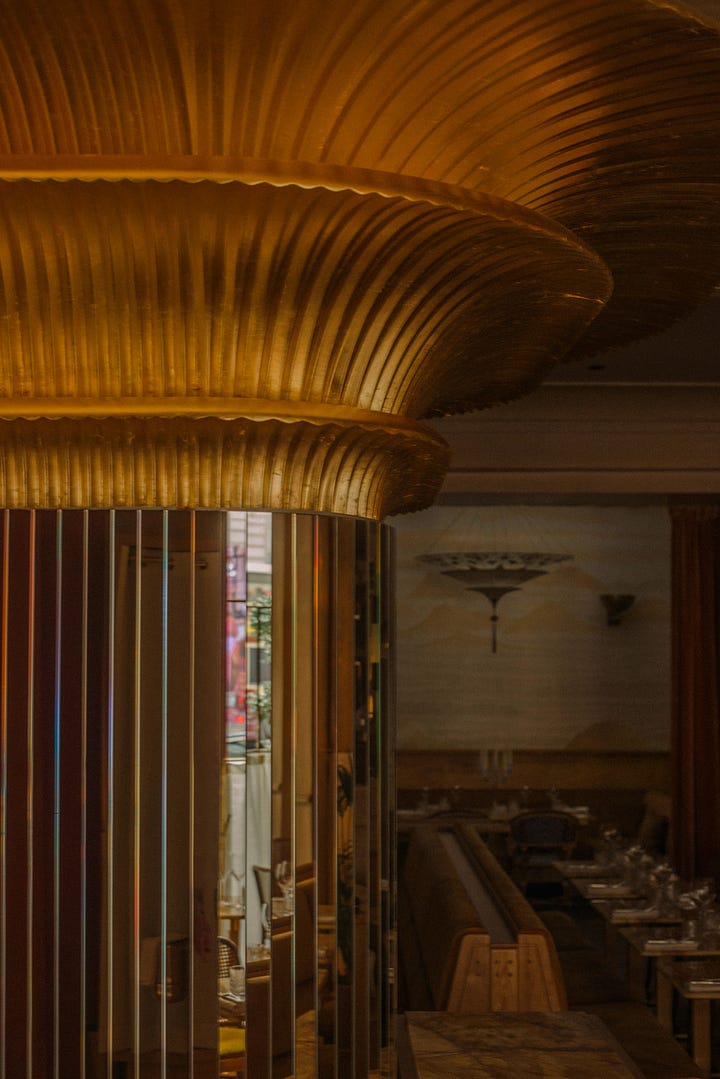

This is one of the most stunning and welcoming restaurants I’ve seen in recent time. It was previously fitted with a mixture of largely grey and blue colors, which John Whelan described as ‘cold’. And I agree. We’ve mentioned this multiple times now. The reason why blue and white lights feel harsh (especially in cozy environments like a restaurant) is because our bodies have an internal circadian clock. There’s nothing more jarring to the soul than walking into a restaurant for dinner with harsh bright fluorescents (and almost why you never see such a thing) — it ruins the vibe.
Keen to bring a sense of warmth back to the restaurant, Whelan decided to base his design scheme on the rich material palette of the art deco movement.
"I was inspired particularly by the restrained Parisian art deco of the 1930s – think Jean-Michel Frank, Pierre Legrain or Sue et Mare," said Whelan. "They tended to use a minimal colour palette but accented their work with beautiful metals and woods."
"The building that houses the restaurant was also built in the 30s and has some art deco moments. I always try to respect the heritage where possible," he continued.
Ingredients:
1¼ cups (310ml) double thick cream
2½ cups (550g) white (granulated) sugar
100g unsalted butter, chopped
2 teaspoons vanilla extract
1 cup (350g) golden syrup
Method
Line a lightly greased 20cm square tin with non-stick baking paper. Place the cream, sugar, butter, vanilla and golden syrup in a large saucepan over high heat and cook, stirring occasionally, until the sugar is dissolved and the mixture comes to the boil. Reduce heat to medium, insert a sugar (candy) thermometer, and cook, without stirring, for about 9–15 minutes or until the temperature reaches 124°C (255°F)+. Set aside to cool for 5 minutes, before carefully pouring the hot caramel into the prepared tin.
Set aside to cool, at room temperature, for 8 hours or overnight, or until firm. Slice to serve. Makes 20
❋ MAKE BEAUTIFUL PINECONE COOKIES
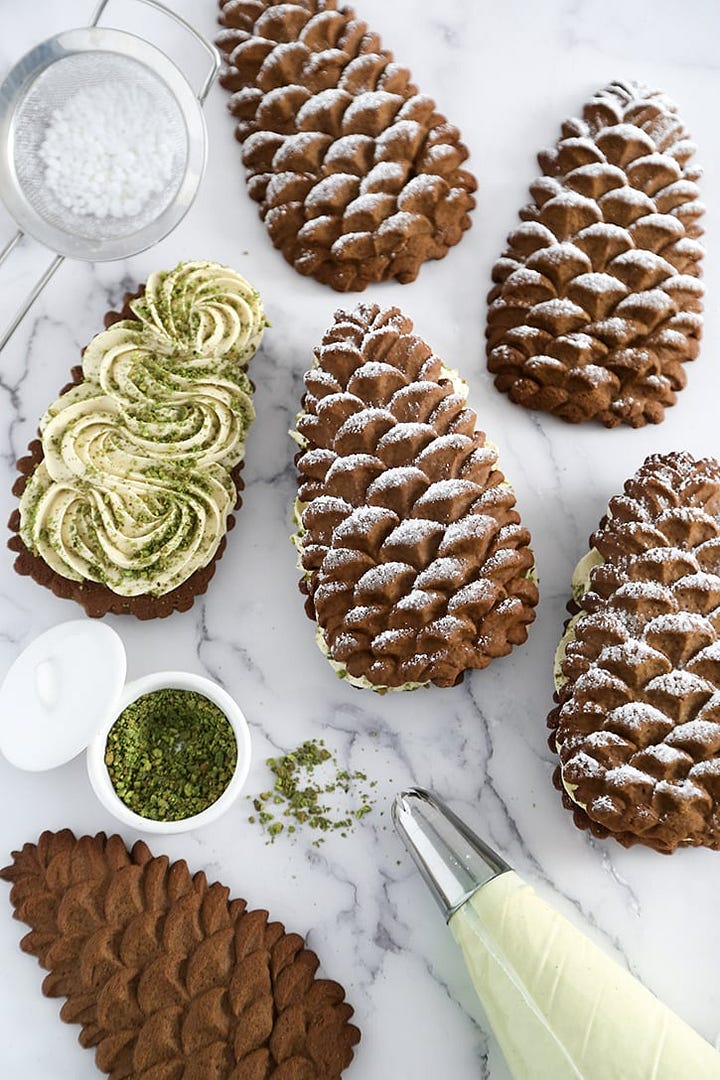

It was love at first sight with these Pinecone Cookies. I first spotted some in an advertisement for a wooden cookie mold. The 3-D effect drew me in, and I just had to order the mold to see if I could recreate them in my own kitchen. I was skeptical, and – full disclosure- there is a learning curve, but once you find your technique it’s easy.
Needless to say, you’ll need to procure the pinecone mold for this recipe. There’s one that’s not too expensive right here. I loved making these cookies because the technique has such rich history. The origins of molding cookies in wood forms can be traced back to the ancient arts of wood carving and pottery, around 3000 BC. The practice has endured through the ages with cookies such as German Springerle and molded Scottish shortbread.
Pistachio paste is a staple in the pastry chef kitchen, and it’s wonderful in buttercream. A little fine grain sea salt mixed in enhances the pistachio flavor and takes the edge off of the buttercream’s sweetness.
❋ Read our latest WARKITCHEN magazines:
❋ Get your copy of Optimal Fuel: Your Nutrition Playbook here. It's a cookbook and nutrition guide — all in one. All proceeds goes towards an outrageous amount of hearty ribeyes and raw honey!
❋ If you’d like to contribute an article or sponsor a future issue, please send us your pitch to rocky@warkitchen.net.
❋ We release a digital magazine issue on the first Sunday of every month. Explore the full magazine archive here.
❋ Adding us (rocky@warkitchen.net) to your contacts, or moving us to primary will make sure you continue receiving these emails. Connect with us on all our socials.
Till next time,
Godspeed!




